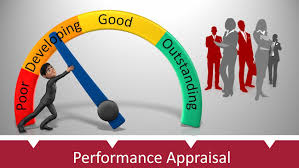Invoicing Problems faced by Field Services Companies
Background
You know your company is doing excellent work for customers. Your field
staff is dedicated in delivering service excellence and you have a great
customer base. Your admin staff has all the tools to serve company staff and
customers alike. However, if your invoicing function is not performing properly,
your company will not be in business for long.
Incorrect invoices will result in late payments or no payments at all.
This has detrimental effect on your cashflow when overheads cannot be paid. Consistent
invoice problems may also result in reputational damage for the company.
And unfortunately, until an invoice has been settled, the client has the
financial upper hand.
Invoice related problems
Problems with invoices come in many shapes and sizes. Experience
resulting from working with field services companies have shown the following
areas as problematic for invoice processes:
1.
Missing
invoices – invoices not reaching their intended recipients are not going to get
paid. If there is no confirmation of receiving an invoice, more time will be
lost before payment could be concluded. Besides the negative impact on cashflow,
there might be a need to repeat the invoicing process.
2.
Missing or
incorrect line data – accuracy is the key catchphrase. Missing or inaccurate
line data might influence the processing of the invoice for payment.
3.
Confusing
invoices – customers would be very reluctant to pay an invoice which they do
not understand what it is for. Links up with the previous point.
4.
Recurring
invoice mistakes – incorrect pricing, inaccurate math and missing payment due
dates will lead to payment delays. Pricing and other costing items which are
not updated centrally will enhance this problem.
5.
Tax
arrears due to incorrect invoices – things tend to get awfully expensive when invoices
do not meet VAT requirements.
6.
Invoice sending
strategies – waiting to send an invoice to a customer serves no purpose at all.
Many businesses tend to not contact customers to follow up if an invoice has
been received. Invoices send via snail-mail has a higher probability to get
lost. eMail addresses on the other hand are prone to spelling mistakes and is
no guarantee to reach the intended recipient. Correct customer information is
of vital importance.
7.
Quotes and
invoices do not match up – an invoice delivered that do not match up to a
client accepted quote will ensure delayed payment and serious reputational
damage.
8.
Complex correction
process for incorrect invoices – the more manual the process of invoice
processing is, the greater the number of possible mistakes.
Accurate Invoices
An accurate ideal invoice that has the best
chance of getting paid will normally include the following items:
·
The client and company contact
information
·
A clear title with the wording “Tax
Invoice”
·
Invoice number, issue date and
payment due date
·
Itemized description of
services rendered products used with the
associated costs
·
Before and after photos where
ever possible
·
Client signatures for “Work to
be completed” and “Work completed”
·
Total amount due, inclusive of
VAT and applicable discounts
·
Payment terms
·
Personal note
Suggested solution
Using a paper-based invoice process is inefficient with a high cost for
paper, copying and storing of documents. Retrieving customer records is
difficult and paper documents can only be handled by a single person at a time.
Replacing a paper-based invoice system with a digitized system makes
sense in this technological age we are living in.
The process for effective invoicing processes can be achieved with the aid of a mobile workforce solution. With such a solution the accuracy of invoice can be greatly enhanced without a delay in delivering the invoice to the client. Invoice costing items such as prices and rates can be maintained centrally in the database, removing a burden from field technicians.
But the mobile workforce solution is more than just a platform for
enhancing invoices. The solution can keep track of the customer service history
which is important to ensure maximum customer service. The solution can also keep
track of invoices and their respective statuses, service contracts for repeat
customer business and maintenance agreements. Invoices can be created with the
press of a button from either work orders, sales orders, or quotes /
estimations.
Invitation
We would like to invite you to contact us at LionGate Solutions for a no
commitment conversation on the operational challenges your field services
company are facing.
We would like to provide you with a free 14-day trial of our solution
before you consider taking the next step.
Pieter Coetzer
https://liongatesolution.co.za




Light Invoice Crack I am very impressed with your post because this post is very beneficial for me and provide a new knowledge to me
ReplyDelete